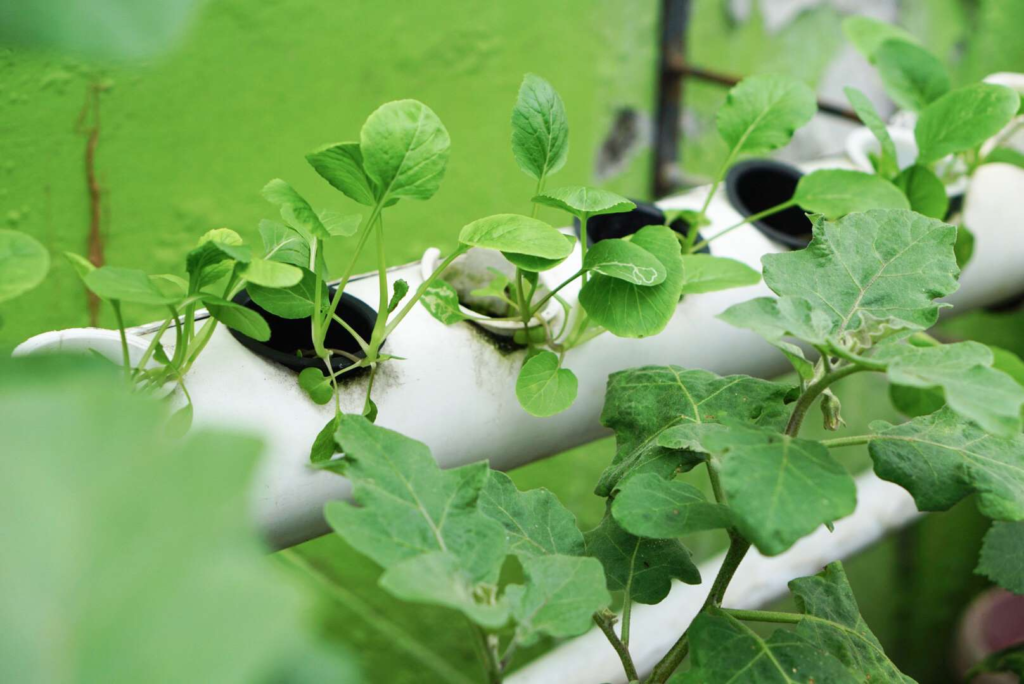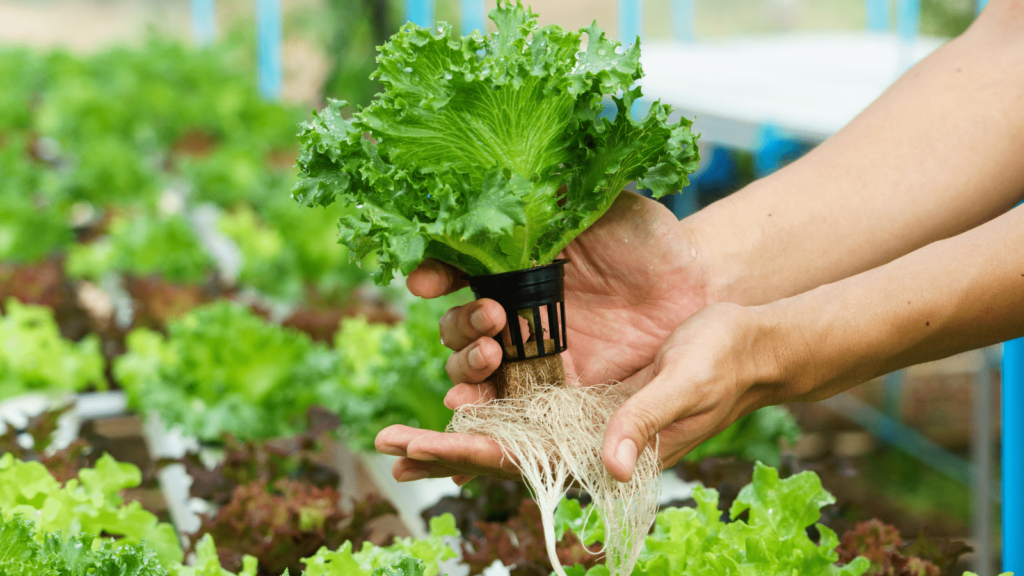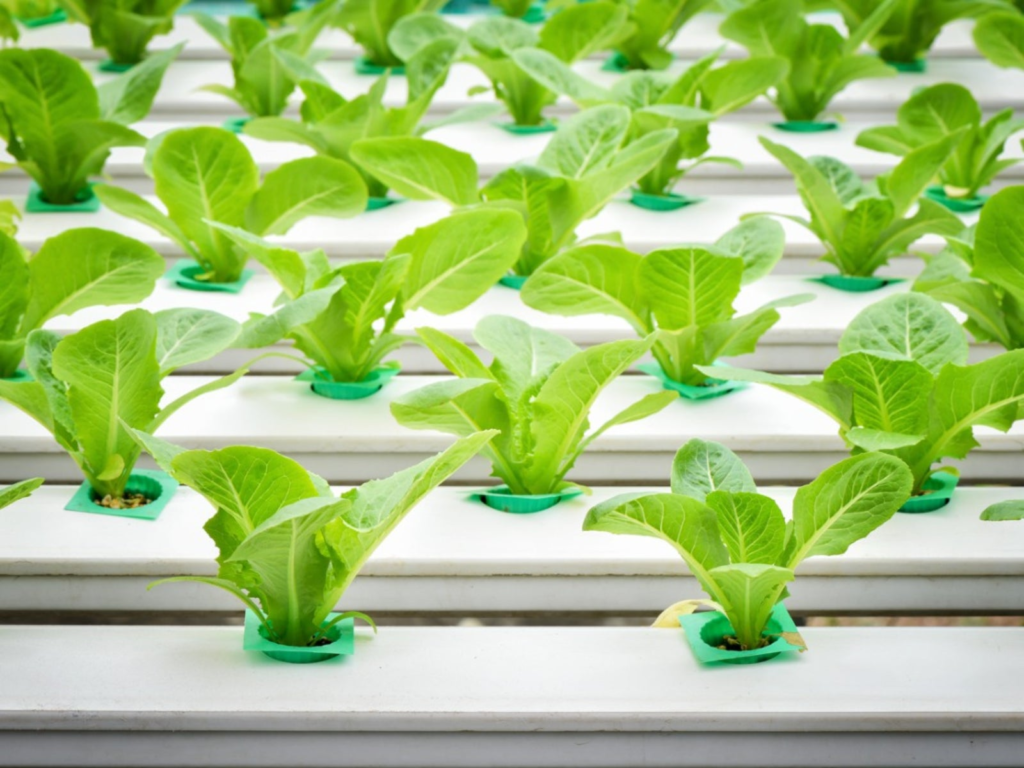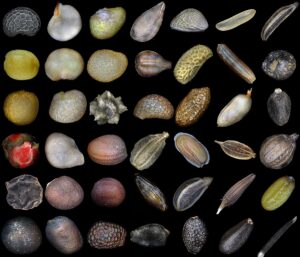The Basics of Hydroponic Gardening: How to Grow and Use Culinary Herbs
Are you looking to elevate your culinary game with fresh herbs year-round? Hydroponic gardening might be the perfect solution for you. This soil-free growing method is revolutionizing how Americans cultivate herbs at home, offering faster growth rates and higher yields than traditional gardening—all while using less space and water.
According to the USDA, the U.S. hydroponic market is experiencing substantial growth, with an estimated value of over $2.1 billion in 2024, and culinary herbs represent one of the fastest-growing segments within this market (USDA’s Agricultural Marketing Service).
In this comprehensive guide, you’ll discover everything you need to know about growing your favorite cooking herbs hydroponically, from setting up your first system to harvesting and using your bounty in delicious dishes.
What is Hydroponic Gardening?
Hydroponic gardening is a method of growing plants without soil. Instead, plants receive all necessary nutrients directly through water. The roots are either suspended in a nutrient-rich water solution or supported by an inert growing medium like perlite, coconut coir, or clay pellets.
This ancient technique—dating back to the Hanging Gardens of Babylon—has been modernized with technology that makes it accessible to home gardeners. The result? A cleaner, more efficient way to grow herbs that:
- Uses up to 90% less water than traditional gardening
- Produces herbs that grow 30-50% faster
- Requires no weeding or soil management
- Can be practiced year-round, regardless of outdoor weather conditions
- Works in limited spaces, including apartments and small kitchens
How Hydroponics Works
The science behind hydroponics is straightforward but elegant. Plants don’t actually need soil—they need the nutrients, water, and oxygen that soil typically provides. In a hydroponic system, you deliver these elements directly to the plant roots in the perfect proportions.
When you remove soil from the equation, you eliminate many common garden problems like soil-borne diseases, pests, and weeds. You also gain precise control over the growing environment, allowing you to optimize conditions for maximum growth and flavor development in your culinary herbs.
Popular Hydroponic Systems for Herb Gardening
Choosing the right hydroponic system is crucial for success with culinary herbs. Here are the most popular options for beginners and experienced gardeners alike:

1. Deep Water Culture (DWC)
The simplest and most affordable hydroponic system, DWC involves suspending plant roots directly in nutrient-rich water. An air pump and air stone keep the water oxygenated, preventing root rot.
Best for: Beginners looking for an inexpensive entry point into hydroponics; herbs with larger root systems like basil and mint.
2. Nutrient Film Technique (NFT)
In NFT systems, a thin film of nutrient solution flows continuously over the plant roots in a slightly tilted channel. This provides an ideal balance of water, nutrients, and oxygen.
Best for: Lightweight herbs with smaller root systems such as thyme, oregano, and cilantro.
3. Ebb and Flow (Flood and Drain)
These systems temporarily flood growing media with nutrient solution before draining it back into a reservoir. The flooding and draining cycle provides both nutrients and oxygen to the roots.
Best for: Versatile herb gardens with different varieties; herbs that prefer cycles of wet and dry conditions.
4. Wick System
The most passive hydroponic method, wick systems use a wicking material to draw nutrient solution up from a reservoir to the roots.
Best for: Herbs with low water and nutrient requirements; gardeners who want a low-maintenance option.
5. Aeroponics
The most high-tech option, aeroponic systems mist plant roots with nutrient solution, providing maximum oxygen exposure.
Best for: Advanced gardeners; herbs that benefit from high oxygen levels at the roots like rosemary and sage.
Best Culinary Herbs for Hydroponic Growing
Not all herbs perform equally in hydroponic systems. The table below highlights popular culinary herbs that thrive hydroponically, along with their specific requirements and time to harvest:
| Herb | Best Hydroponic System | pH Range | Nutrient Concentration (EC) | Days to Harvest | Special Considerations |
|---|---|---|---|---|---|
| Basil | DWC, NFT | 5.5-6.5 | 1.0-1.6 | 25-30 | Pinch tops regularly to promote bushy growth |
| Mint | DWC, Ebb and Flow | 5.5-6.5 | 1.4-1.8 | 45-60 | Aggressive grower; give it its own container |
| Cilantro | NFT, Ebb and Flow | 6.0-6.5 | 1.3-1.8 | 28-35 | Prefers cooler temperatures (65-70°F) |
| Parsley | NFT, DWC | 5.5-6.0 | 1.0-1.8 | 70-90 | Slow starter but long-lasting once established |
| Thyme | NFT, Wick | 6.0-6.5 | 1.0-1.5 | 80-90 | Prefers drier root conditions; drought-tolerant |
| Oregano | NFT, Wick | 6.0-7.0 | 1.0-1.8 | 80-90 | Mediterranean herb that likes warmth and light |
| Chives | DWC, Ebb and Flow | 6.0-6.5 | 1.5-2.0 | 60-90 | Cut regularly 2″ above crown for continued growth |
| Rosemary | Aeroponics, Ebb and Flow | 5.5-6.0 | 1.0-1.5 | 90-120 | Sensitive to overwatering; needs excellent drainage |
| Sage | Aeroponics, Ebb and Flow | 5.5-6.5 | 1.0-1.5 | 80-90 | Prefers drier conditions and good air circulation |
| Dill | NFT, DWC | 5.5-6.5 | 1.0-1.8 | 40-45 | Tall herb; provide adequate vertical space |
Setting Up Your First Hydroponic Herb Garden
Ready to start your hydroponic herb journey? Here’s a step-by-step guide to setting up a basic Deep Water Culture system—perfect for beginners:

What You’ll Need:
- Container/reservoir (food-grade plastic tub with lid)
- Net pots (2-3 inches in diameter)
- Growing medium (expanded clay pellets, rockwool, or coconut coir)
- Air pump with air stone
- Hydroponic nutrients (specifically formulated for herbs)
- pH testing kit and adjusters
- EC/TDS meter (to measure nutrient concentration)
- Seeds or herb seedlings
- Grow lights (if growing indoors without adequate natural light)
Setup Instructions:
- Prepare your container: Drill holes in the lid of your container that are slightly smaller than your net pots. These holes should be spaced to give each herb adequate room to grow.
- Install aeration: Place the air stone in the bottom of your container and connect it to the air pump. This will provide crucial oxygen to your herbs’ roots.
- Mix your nutrient solution: Fill your container with water, leaving 1-2 inches of space at the top. Add hydroponic nutrients according to the manufacturer’s instructions for culinary herbs.
- Check and adjust pH: Most culinary herbs prefer a pH between 5.5-6.5. Test your nutrient solution and adjust as needed using pH up or down solutions.
- Place your herbs: If starting from seeds, germinate them in rockwool cubes or another suitable medium before transferring to net pots. If using seedlings, gently remove soil from roots and rinse before placing in net pots with growing medium.
- Position your system: Place your hydroponic system where it will receive adequate light—either natural sunlight (6-8 hours daily) or under grow lights.
- Monitor and maintain: Check water levels daily and top off as needed. Replace the nutrient solution entirely every 2-3 weeks.
Maintaining Your Hydroponic Herb Garden
Successful hydroponic gardening requires regular monitoring and maintenance. Follow these essential practices:
Daily Tasks:
- Check water levels and top off with pH-adjusted water as needed
- Ensure the air pump is functioning properly
- Observe plants for any signs of stress or nutrient deficiencies
Weekly Tasks:
- Test and adjust pH and nutrient concentration (EC/TDS)
- Inspect for any signs of pests or disease
- Prune herbs as needed to encourage bushier growth
Monthly Tasks:
- Completely replace nutrient solution
- Clean any salt buildup on system components
- Deep clean air stones to ensure proper oxygenation
Common Problems and Solutions
Even the best-maintained hydroponic gardens can encounter issues. Here are solutions to common problems:
Nutrient Deficiencies
Symptoms: Yellowing leaves, stunted growth, leaf curling Solution: Adjust nutrient concentration and ensure pH is in the correct range for nutrient absorption. Different herbs may require slightly different nutrient profiles.
Root Rot
Symptoms: Brown, slimy roots; foul odor Solution: Increase oxygenation with a stronger air pump, clean the system thoroughly, and consider adding beneficial bacteria to your reservoir.
Algae Growth
Symptoms: Green water or film on exposed surfaces Solution: Block light from reaching the nutrient solution using opaque containers or covers. Clean affected areas with a 3% hydrogen peroxide solution.
Pests
Symptoms: Visible insects, damaged leaves, sticky residue Solution: Introduce beneficial insects or apply organic insecticidal soap. For severe infestations, temporarily remove plants and thoroughly clean the system.
Harvesting and Using Your Hydroponic Herbs
The moment you’ve been waiting for—harvest time! Follow these guidelines for maximum flavor and continued productivity:
When to Harvest:
- Most herbs can be harvested when they reach 6-8 inches in height
- Harvest in the morning when essential oil concentration is highest
- Take no more than one-third of the plant at a time to ensure regrowth
How to Harvest:
- Use clean, sharp scissors or pruning shears
- Cut just above a leaf node to encourage branching
- For basil, pinch off the top sets of leaves regularly to prevent flowering
Storing Your Herbs:
- Short-term: Place stems in a glass of water like a bouquet
- Medium-term: Wrap in damp paper towels and refrigerate
- Long-term: Freeze in ice cube trays with olive oil or dry for storage
Culinary Uses for Your Hydroponic Herbs
Hydroponically grown herbs often have more intense flavors than their soil-grown counterparts. Here are some delicious ways to use your harvest:

Fresh Applications:
- Compound Butters: Mix chopped herbs into softened butter for an instant flavor boost to vegetables, meats, or bread
- Herb-Infused Oils: Steep fresh herbs in warm olive oil for 30 minutes to create flavorful drizzling oils
- Cocktails and Mocktails: Muddle mint, basil, or thyme for sophisticated drink options
- Finishing Touches: Sprinkle freshly harvested herbs over completed dishes just before serving
Cooking Applications:
- Herb-Forward Sauces: Create pestos, chimichurris, and gremolatas
- Aromatic Bases: Start soups, stews, and braises with a mirepoix enhanced with fresh herbs
- Marinades: Combine chopped herbs with acid, oil, and seasoning for tenderizing proteins
- Herb Salads: Make herbs the star instead of a garnish with herb-centric salads
Advanced Hydroponic Techniques for Culinary Herbs
Once you’ve mastered the basics, consider these advanced techniques to enhance your hydroponic herb garden:
Nutrient Film Technique (NFT) Systems
For more serious herb production, NFT systems offer excellent results with minimal water usage. These systems use channels where a thin film of nutrient solution flows over the roots, providing an ideal balance of water, nutrients, and oxygen.
Controlled Environment Agriculture
Take your hydroponic gardening to the next level by controlling temperature, humidity, and CO2 levels. According to research from the USDA Agricultural Research Service, controlled environment agriculture can increase yields by 20-30% compared to basic hydroponic setups.
Automated Systems
Invest in timers, dosing pumps, and monitoring equipment to automate nutrient delivery, lighting schedules, and environmental controls. These systems can send alerts to your smartphone when parameters drift outside optimal ranges.
The Economics of Hydroponic Herbs
Is growing hydroponic herbs cost-effective? Let’s break down the numbers:
- Initial investment: A basic hydroponic setup costs $100-300
- Operating costs: Approximately $5-15 per month for electricity and nutrients
- Yield value: A well-maintained system can produce $15-30 worth of herbs monthly
- Return on investment: Most systems pay for themselves within 6-12 months
Compare this to purchasing fresh herbs at the grocery store, where a single small package can cost $2-4 and often wilts before you use it all. Your hydroponic garden provides fresher herbs, on demand, with no waste.
Conclusion: The Future of Home Herb Gardening
Hydroponic gardening represents the perfect intersection of technology and tradition. It allows you to grow flavorful, nutritious herbs year-round while conserving resources and avoiding pesticides.
As you gain experience, you’ll develop your own preferences for systems, nutrient formulations, and growing techniques. The journey is as rewarding as the destination—watching your herbs thrive under your care and then transforming them into delicious culinary creations.
Whether you’re a professional chef seeking the freshest ingredients or a home cook who wants to elevate everyday meals, hydroponic herb gardening offers a sustainable, enjoyable way to connect with your food and enhance your cooking.
Ready to get started? Your first hydroponic harvest is just weeks away!





